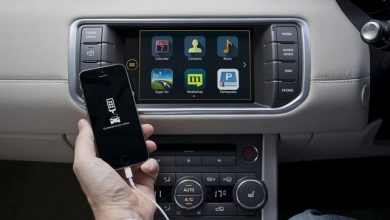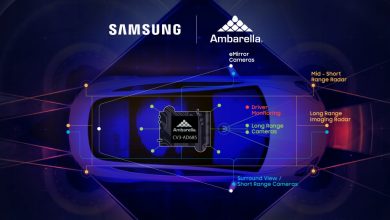Overcoming the challenges in Connected Cars with Smart Connectivity
Vehicle-to-Everything (V2X) communication is a promising technology enabling smoother, more efficient transportation in smart cities. In a recent trial, V2X was able to reduce commute times by 12% and decrease collisions by 80% in Las Vegas. With such striking benefits, it’s no surprise V2X is gaining traction, with investments reaching billions of dollars.
V2X is a broad term covering Vehicle-to-Vehicle (V2V), Vehicle-to-Infrastructure (V2I), and other communications. It transmits important data wirelessly between cars, roadways, traffic signals, and other infrastructure. This data helps vehicles “see” hazards and traffic beyond the line of sight, even around corners. V2X paves the way for connected, automated driving.
Investments in V2X technology have been stellar, with billions of dollars being poured over the years to accelerate the deployments of smart vehicle infrastructure, especially in smart cities. Talking about the industries which are supportive of this technology adoption, several automakers, mobile operators, and equipment makers have expressed their support of the V2X technology. The United States, a few members of the EU, and China have undertaken active projects related to V2X infrastructure deployment. Some automobile manufacturers that support V2X technology include Audi, BMW, Daimler, Ford, Land Rover, Renault, Tesla, and Toyota.
When looking at the major players, the United States is expected to be the global leader. MarketsandMarkets Research Pvt Ltd estimates that North America would be the largest V2X market during the period (2017–2025), followed by the EU countries. All said the global V2X market is expected to reach $1B by 2025, with the V2X cybersecurity market projected to reach $3,065 million by 2025.
Laying the foundation of Vehicle Diagnostics & Communication with OBD telemetry
On-board Diagnostics (OBD), a pivotal technology in the automotive industry, serves as the linchpin in monitoring and reporting the status and health of various vehicle parameters, thereby laying a robust foundation for vehicle diagnostics and communication. OBD systems, with their intrinsic capability to provide critical data such as vehicle speed, emission levels, and engine data, have become indispensable in ensuring optimal vehicle performance and adherence to emission standards. The system, comprising sensors, an Electronic Control Unit (ECU), and actuators, meticulously monitors the vehicle’s internal operations, providing a real-time diagnostic overview that is crucial for both preventive maintenance and troubleshooting. The ECU, acting as the vehicle’s brain, gathers input from numerous sensors, ensuring that the vehicle operates within the designated parameters, thereby safeguarding its health and longevity.
The communication facilitated by OBD systems is predominantly based on a query-response mode, wherein an external scanning tool connects to the vehicle’s internal system through an OBD port and connector, initiating a dialogue with the ECU. When the tool requests data, the ECU responds, providing valuable insights into the vehicle’s status and any potential issues. This diagnostic communication is further enhanced with features such as the Control Area Network (CAN) controller, which, when sensors detect a malfunction, triggers messages in the form of trouble codes. These codes are then analyzed, offering a glimpse into the internal workings of the vehicle, and ensuring that any anomalies are addressed promptly, safeguarding the vehicle against unforeseen breakdowns and maintaining optimal operational efficacy.
Vehicle diagnostic communication by using OBD systems
An On-board Diagnostic (OBD) System plays a pivotal role in overseeing the internal mechanisms of various sub-units within a connected vehicle, ensuring a seamless communication of vehicular status and potential malfunctions through a diagnostic communication channel. This communication, structured in a query-response mode, not only ensures driver safety by providing real-time updates throughout the vehicle’s lifetime but also identifies equipment anomalies, thereby preventing the need for unnecessary replacements and avoiding secondary malfunctions. The system employs an external scanning tool, connecting to the vehicle’s internal system through an OBD port and connector, and when data is requested, the Electronic Control Unit (ECU) responds accordingly. Notably, the Control Area Network (CAN) controller is utilized for diagnostic communication, triggering messages in the form of trouble codes when sensors detect malfunctions, which are then analyzed to diagnose internal issues.
In the realm of OBD systems in connected cars, LTE CAT 1 has emerged as a notably efficient technology, recognized for its affordability, low latency, and high speed. It has been optimized for various IoT use cases and adopted by major LTE operators like Verizon, AT&T, T-Mobile, and NTT DoCoMo, proving its efficacy for applications such as Security Systems, retail terminals, and smart meters, especially in Onboard Vehicle Diagnostics. Even with the advent of new narrowband LTE-M and NB-IoT networks, LTE CAT 1 continues to be a viable option.
In light of this, the introduction of solutions like the C10GS from Cavli’s C-Series, an LTE CAT 1 compatible Smart Cellular Module, becomes pertinent. Based on 3GPP Release 10 and integrated with eSIM provision & Global Navigation Satellite System (GNSS), the C10GS not only assures global deployability thanks to Cavli Hubble Global Connectivity but also stands out as a conducive solution for Onboard Diagnostic applications in various domains like Logistics and Automotive, ensuring an intelligent, secure, and high-bandwidth communication channel for vehicle tracking systems. This integration of advanced technology not only fortifies the diagnostic communication within connected vehicles but also ensures a robust, secure, and efficient vehicular communication system, aligning with the advancements in automotive telematics.
The magic of Cavli Hubble for OBD solutions
Navigating through the expansive universe of the Internet of Things (IoT), Cavli Hubble from Cavli Wireless emerges as a pivotal IoT Connectivity as a Service (CaaS) platform, seamlessly intertwining On-board Diagnostic (OBD) systems with the cloud and offering a robust, scalable, and secure framework for a myriad of connected devices. This platform transcends mere connectivity, enabling remote monitoring and data acquisition from connected cars while providing a comprehensive infrastructure for building, connecting, and scaling IoT solutions across diverse sectors like Automobiles, Logistics, and Healthcare.
With connectivity spanning over 180 countries and access to 150+ LTE networks, Cavli Hubble ensures streamlined operations of numerous connected devices, simplifying IoT deployments and maintenance across various applications. Amidst the rapid and complex evolution of IoT, which encompasses smart devices and cloud services, platforms like Cavli Hubble become indispensable. Cavli Hubble, with its capability to connect to local IoT networks, orchestrate and monitor devices, manage invoices and inventory, and support Firmware Over-the-Air (FOTA) updates, stands out as a seamless, efficient, and cost-effective IoT solution, powering a wide array of applications across numerous industries.
Navigating the Future with Intelligent Connectivity
As we steer into the future, the integration of technologies like Cavli Hubble in the realm of On-board Diagnostic systems and beyond signifies a leap towards intelligent, connected ecosystems that promise not only enhanced functionality but also a secure, efficient, and scalable operational framework. The confluence of IoT and vehicular communication systems heralds an era where data-driven decisions, remote monitoring, and advanced diagnostics converge to forge a path towards smarter, safer, and more sustainable transportation solutions. With IoT connectivity and modem management platforms, we are not merely observing the evolution of connected technologies but actively participating in shaping a future where technology and connectivity drive innovation, enhance experiences, and most importantly, create solutions that are seamlessly integrated into our digital and physical worlds. The journey ahead is rife with possibilities, and with robust, secure, and intelligent connectivity solutions, we are well on our way to navigating the intricate web of the future automotive and IoT landscape, ensuring a journey that is as enlightening as the destination itself.
About the Author

Ajit, co-founder and CMO at Cavli Wireless, transformed the startup into a global IoT leader, providing Connectivity as a Service to over 50 OEMs in 14 countries. With a background in HVAC sales and an MBA, he shifted to entrepreneurship, co-founding Cavli. Ajit now leads marketing operations, drives market growth, and focuses on strategic talent acquisition for scaling, with a passion for marketing and team building.


